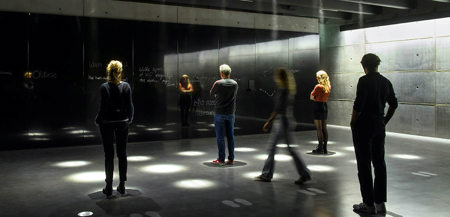

National Monument Kamp Amersfoort
Tinker imagineers
A new museum in which the history of that place becomes palpable: the oppression, the injustice, and the fear. During the Second World War, around 47,000 prisoners were held at Kamp Amersfoort, a prison camp as well as a transit camp. The redesigned outside area, the architecture, and the exhibition illustrate what went on in there. Upon entering the museum, visitors walk down the stairs and enter the immense space, soberly and modestly furnished, and located underneath the former camp. The play on contrasts, the use of materials and original elements recall the atmosphere of the past. The result is a new way of commemorating.
The exhibition tells the personal stories of the prisoners, a helper, and the perpetrators. Who were they? The impressive video footage in black and white reveals what life in the camp was like. A large map on the wall shows the transports of prisoners coming in and going out. They were seen and treated as mere numbers. But they regain their names and faces through the gigantic portraits printed on the pillars. Their belongings are displayed in the drawers below the images, and their personal stories can be heard.
In a social VR experiment, visitors experience the effects of peer pressure, authority, and trust. Finally, there is room for reflection. What did I just see and hear? What traces do I leave behind? Once outside again, a steel model of the camp illustrates its scale.